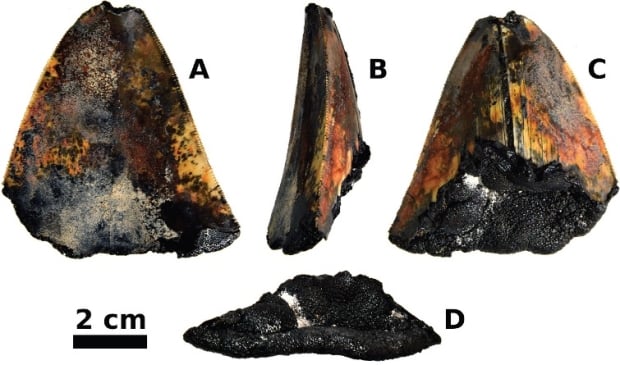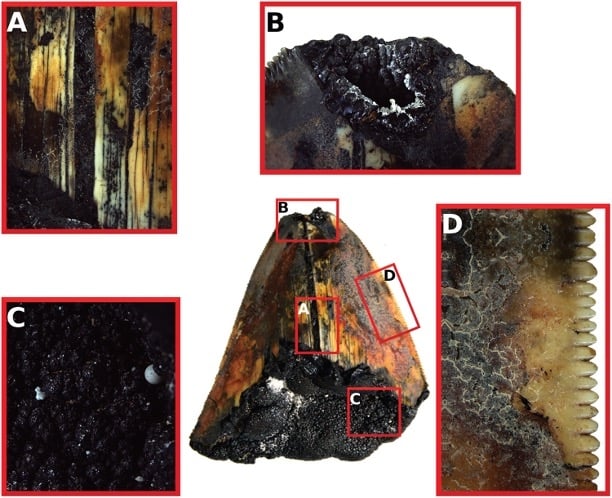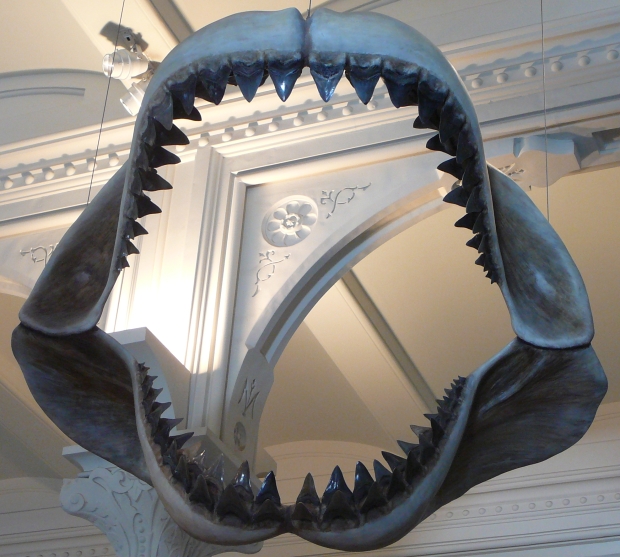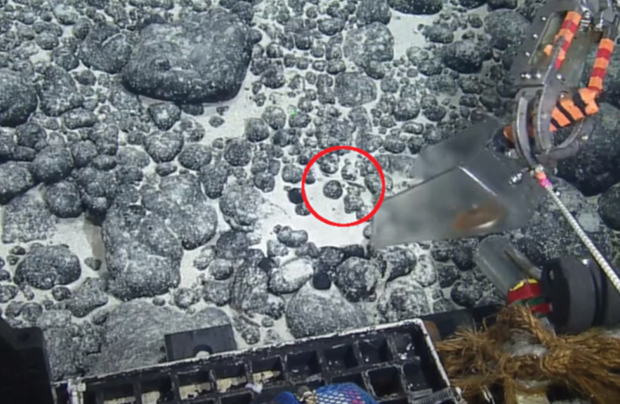The Megalodon is a prehistoric great white shark and one of the most fearsome predators to have ever been discovered by researchers.

Figure 2
Megalodons roamed the deep seas between 4 and 20 million years ago, and these fearsome 20-meter-long creatures wielded some 40,000 individual razor-sharp teeth throughout their lives. These teeth are about as long as your palm to the end of your middle finger, and while these massive predators swam through the ocean, they shed their teeth, approximately 40,000 over their life.
These teeth float down to the ocean floor, and now researchers, for the first time, have found one embedded in the seafloor 1.9 miles below the surface of the Pacific Ocean. The tooth was recovered and inspected back on the dry land, with the researchers reporting it had a broken tip but still had its serrated edges intact. The newly discovered tooth isn't the first Megalodon tooth to be discovered, nor the biggest (2.5-2.6 inches), but its condition is believed to be pristine and will be added to the historical records of the once monstrous predators that haunted the deep blue.

Figure 3
"The tip of the tooth is broken and only the enameloid part fossilised leaving, as far as recognisable, the inner part of the capsule hollow (Figure 3B). All damaged areas, including the broken tip, the enameloid folds (Figure 3A) as well as the tooth basis, are covered by a blackish manganese crust. The outer structure of this crust is granular (Figure 3C).
The lower edge of the crown is clearly visible when inspecting the tooth from its lingual side; the enameloid forms an arch (Figure 2C). Only the enameloid is preserved, the root is lacking. The cutting edges are sharply serrated. A side-facing view reveals a slight curvature of the upper crown labially," write the researchers

Megalodon fossil
"The first in situ documentation of a megatooth shark fossil from the deep sea highlights the importance of using advanced deep-diving technologies to survey the largest and least explored parts of our ocean," the team concludes


